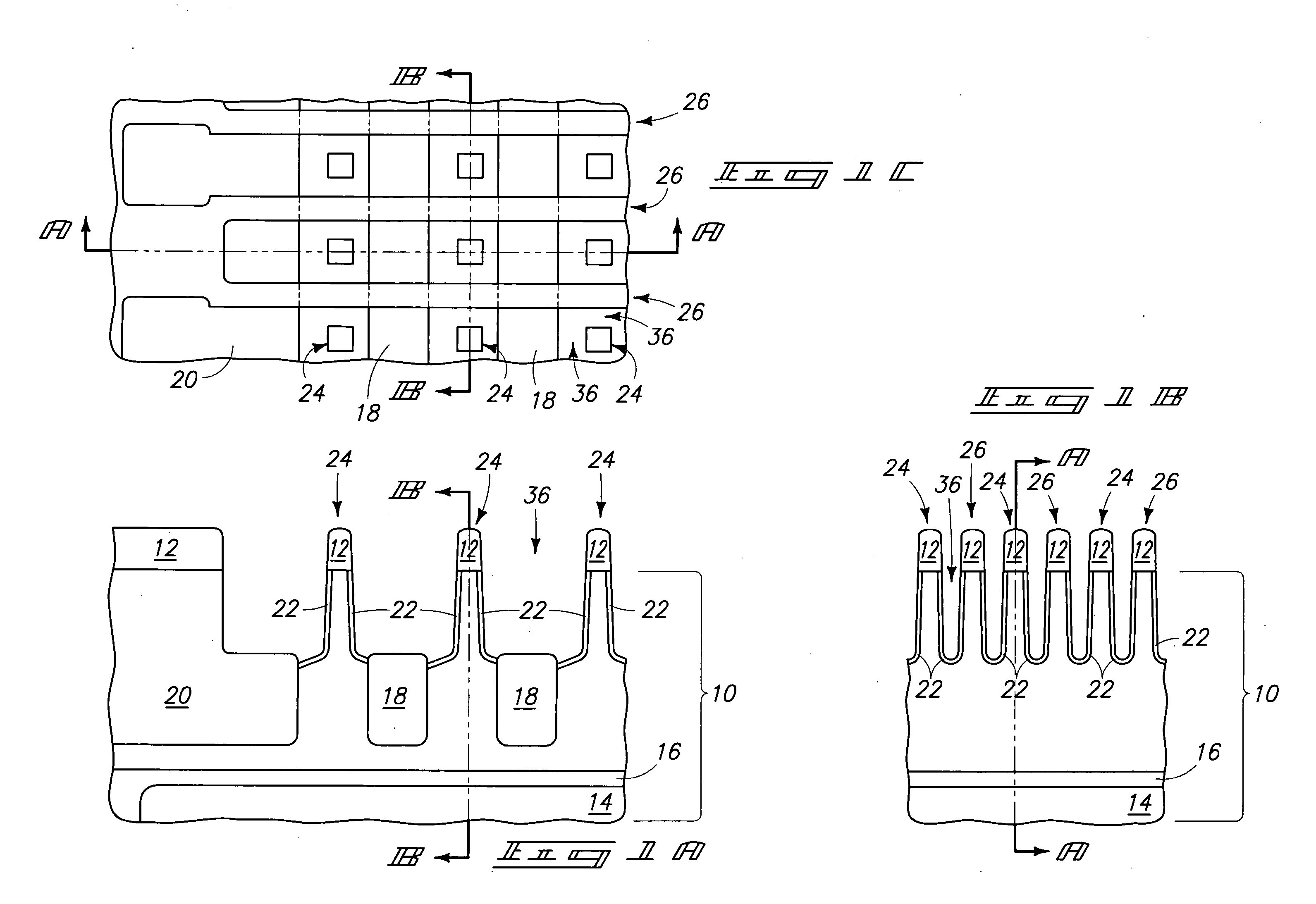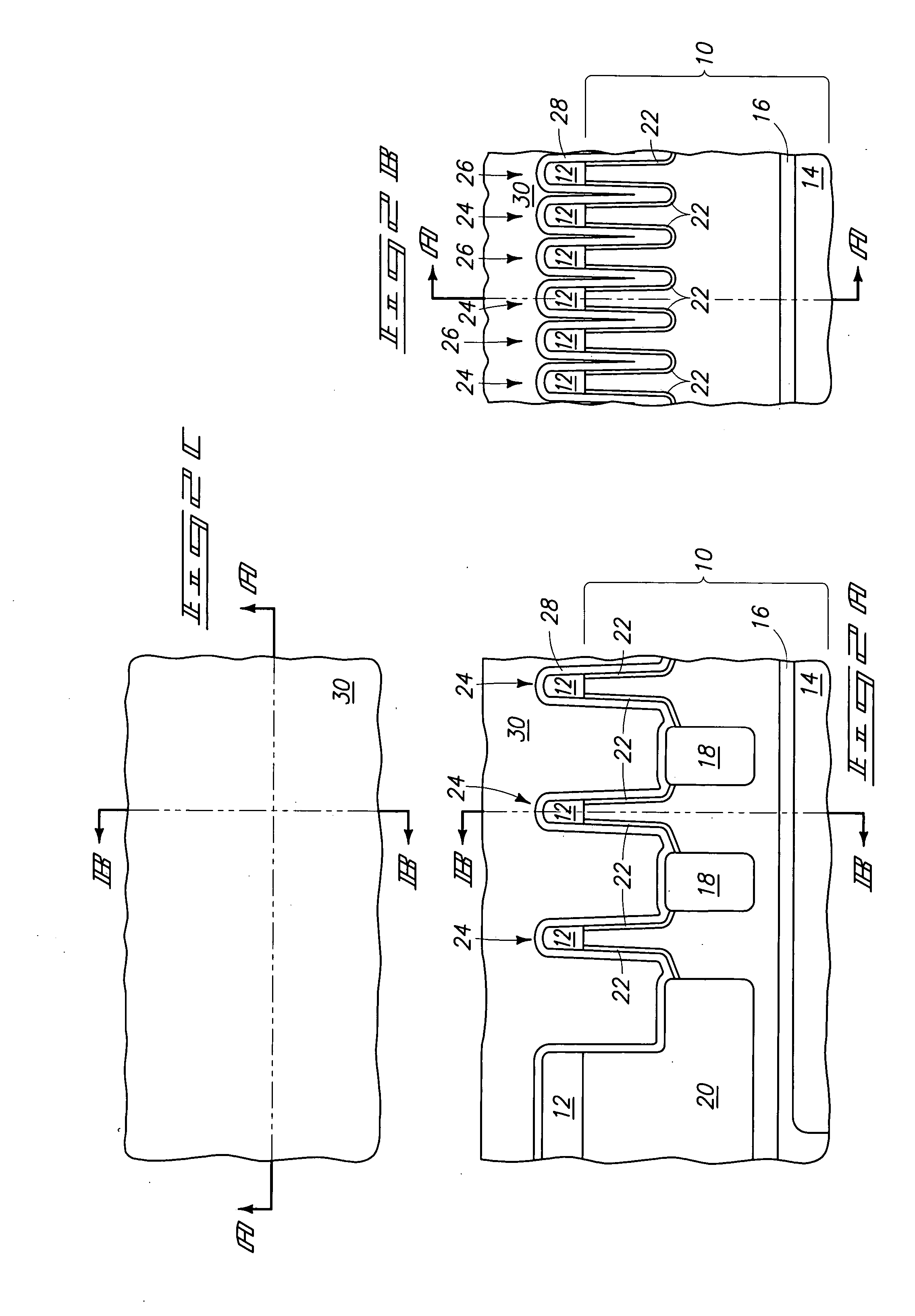Transistor gate forming methods and transistor structures
a technology of transistors and transistors, applied in the direction of basic electric elements, electrical equipment, semiconductor devices, etc., can solve the problems of difficulty in substituting metal gate electrode materials for polysilicon, polysilicon exhibits a generalized too high resistivity for aggressive device scaling,
- Summary
- Abstract
- Description
- Claims
- Application Information
AI Technical Summary
Benefits of technology
Problems solved by technology
Method used
Image
Examples
example
[0044] A transistor structure as shown in FIGS. 5A-C was formed by supercritical fluid deposition of 150 Angstroms of TiN on the structure shown in FIGS. 1A-C. 500 to 2,000 Angstroms of polysilicon with a resistivity of 20 to 200 Ohm-centimeter were formed on the TiN by CVD. Chemical mechanical polishing followed, removing polysilicon and stopping on Si3N4 masking layer 12. Polysilicon was recessed into line openings 36 using 116 sec. of RIE in a LAM 9400 with 80 to 150 sccm of HBr and 100 to 200 sccm of He at a pressure of 50 to 100 milliTorr and a power of 125 to 225 Watts. Wet etching at 55° C. using 2 volume % NH4OH and 3 volume % H2O2 in deionized water for 7 min. produced the FIGS. 5A-C structure. Scanning electron microscopy of cross-sections and tilted top views did not reveal any cracks or stringers. The processing was repeated several times within the described parameter ranges, producing highly similar results. Subsequent Rs testing revealed a range of 28.9 to 32.3 Ohm / sq...
PUM
 Login to View More
Login to View More Abstract
Description
Claims
Application Information
 Login to View More
Login to View More - R&D
- Intellectual Property
- Life Sciences
- Materials
- Tech Scout
- Unparalleled Data Quality
- Higher Quality Content
- 60% Fewer Hallucinations
Browse by: Latest US Patents, China's latest patents, Technical Efficacy Thesaurus, Application Domain, Technology Topic, Popular Technical Reports.
© 2025 PatSnap. All rights reserved.Legal|Privacy policy|Modern Slavery Act Transparency Statement|Sitemap|About US| Contact US: help@patsnap.com



